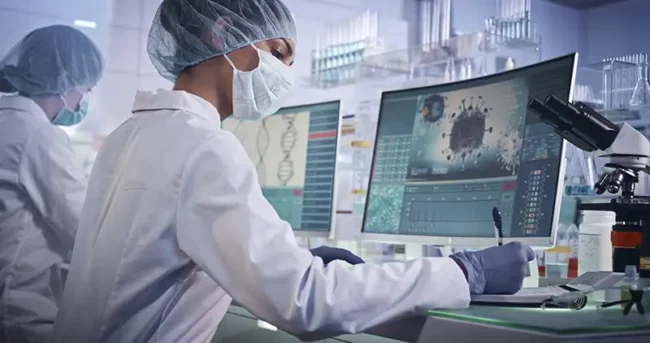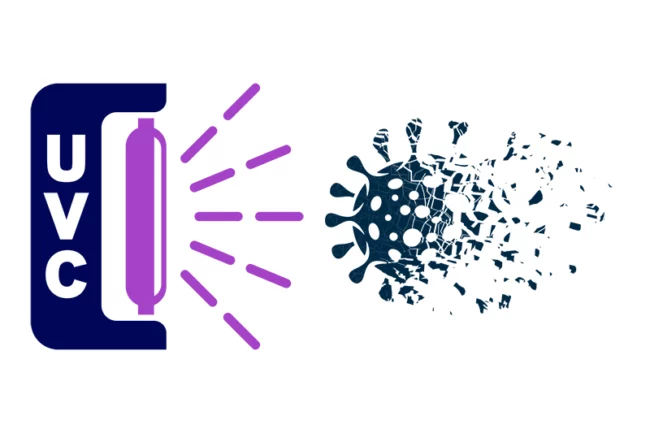How a Virus Works
Our indoor air disinfection solutions use UV light to deactivate viruses and make them harmless to people inside your building. Kill viruses before they can make people sick with our continuous UV light disinfection systems specifically designed for public spaces.
Get in touch now to request a proposal for your building.
How Does a Virus Work?
 To understand how our UV light sanitizing technology works, it’s important to know what a virus is and what it does.
To understand how our UV light sanitizing technology works, it’s important to know what a virus is and what it does.
Viruses are essentially clusters of DNA or RNA enclosed in a protein coat. They emulate your cell’s coat for camouflage, enabling their entry into a target host cell. They use your host cells to supply the resources they need to replicate.
When someone is infected with a virus, they can spread it in many ways, including through respiratory droplets that can become aerosolized in the air. If you’re exposed to these virus particles, such as by breathing them in, you’re at risk for infection.
The virus essentially attaches to specific cells and enters healthy cells to infect them with the viral DNA or RNA. From there, it takes over the cell and consumes all of the resources required to make new viruses, ultimately bursting to be released on you and the world.
For most people, there is a certain amount of viral exposure needed to get sick. For instance, being exposed to just one particle of a virus usually won’t make you sick because your immune system can destroy the virus before you get sick. The minimum infectious dose is the number of viruses that will allow a detectable infection to occur.
The minimum infectious does varies with each virus. Some only need a few particles to cause an infection, while others need several thousand particles. Also, people with weakened immune systems may need less exposure to virus particles to get sick.
Obviously, an optimal way to help prevent people from getting sick from viruses or chemicals in your building is to kill viruses before they can infect cells, i.e. while in the air on their way to you and yours.
How Does UV Light Disinfection Kill Viruses?
 UV light disinfection with our innovative UVPhasor® works by damaging pathogen DNA or RNA and protective protein coatings. This effectively deactivates them so they can’t replicate.
UV light disinfection with our innovative UVPhasor® works by damaging pathogen DNA or RNA and protective protein coatings. This effectively deactivates them so they can’t replicate.
Using powerful UVC radiation, our UVPhasor® provide a dose of UV light that proves deadly for viruses and other pathogens. UVPhasor® create a disinfecting barrier above people’s heads to destroy viruses and other germs as they become aerosolized.
Another key benefit of choosing UV light disinfection to protect your building is that it works on a huge range of pathogens, no matter the variant or mutation.
Viruses are constantly mutating, making them incredibly difficult to fight through things like vaccines and medications. Viruses mutate in two main ways. The first is through errors in copying the DNA from one cell to another, creating a genetic mutation. The other way is when two similar viruses infect the cell at the same time, effectively “mating” and combining their genetic material. Virus mutations can cause the virus variant to become weaker or stronger and usually doesn’t have a large impact on the symptoms you would experience with infection.
Fortunately, UV light sanitizing with the UVPhasor® can help protect your building against viruses in spite of constant mutation. Because UVC rays from our disinfecting lights target the protein coating and DNA of the virus, it doesn’t matter how it changes and it can kill most different strains of viruses, including COVID-19, influenza, and MERS.
Promote health and safety in your business. Contact our team for a UV light disinfection system to kill more than 99.9% of pathogens in your facility.
